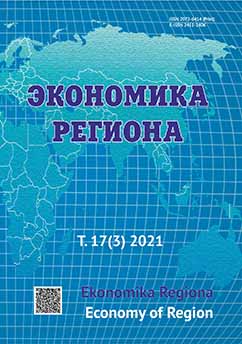Оценка человеческого капитала в макрорегионах России
Assessment of Human Capital in Russian Macroregions
Author(s): Sergey Georgievich Shulgin, Yulia Victorovna ZinkinaSubject(s): Social Sciences, Economy, National Economy, Demography and human biology, Human Resources in Economy, Socio-Economic Research
Published by: Институт экономики Уральского отделения Российской академии наук
Keywords: human capital; Human Development Index; Human Life Indicator; life expectancy; mortality tables; education level; health status; inequality in mortality; Russia; Russian federal districts;
Summary/Abstract: A quantitative assessment of human capital is necessary for both understanding society and implementing effective socio-economic policies. In the present paper, a new approach — the Human Life Indicator (HLI) — was implemented to measure inequality in life expectancy. The Human Development Index (HDI), proposed by the United Nations, does not take into account significant internal inequalities of countries with the same or similar life expectancy. On the contrary, HLI reflects the well-being in terms of years of life, additionally considering the inequality in life expectancy. Presented calculations were based on federal mortality statistics. This study estimated human development of Russian federal districts by comparing HDI and HLI. The analysis revealed that high HDI values, achieved, for example, due to a high gross regional product (GRP) per capita, do not translate into an improvement in the quality of life for the majority of the population. Such situation is observed in the Far Eastern Federal District. The regions that are relatively prosperous in terms of HLI are concentrated in the European part of Russia and the North Caucasus Federal District. Simultaneously, most Siberian and the Far Eastern regions, characterised by high inequality in life expectancy, require the attention of federal and regional authorities. The presented approach to assessing the success of regional development can be used to estimate how the ongoing socio-economic policy and health care reforms influence the quality of life in the regions. This method can also be applied to compare inter-regional indicators of human capital and monitor changes in well-being of the population.
Journal: Экономика региона
- Issue Year: 17/2021
- Issue No: 3
- Page Range: 888-901
- Page Count: 14
- Language: Russian

